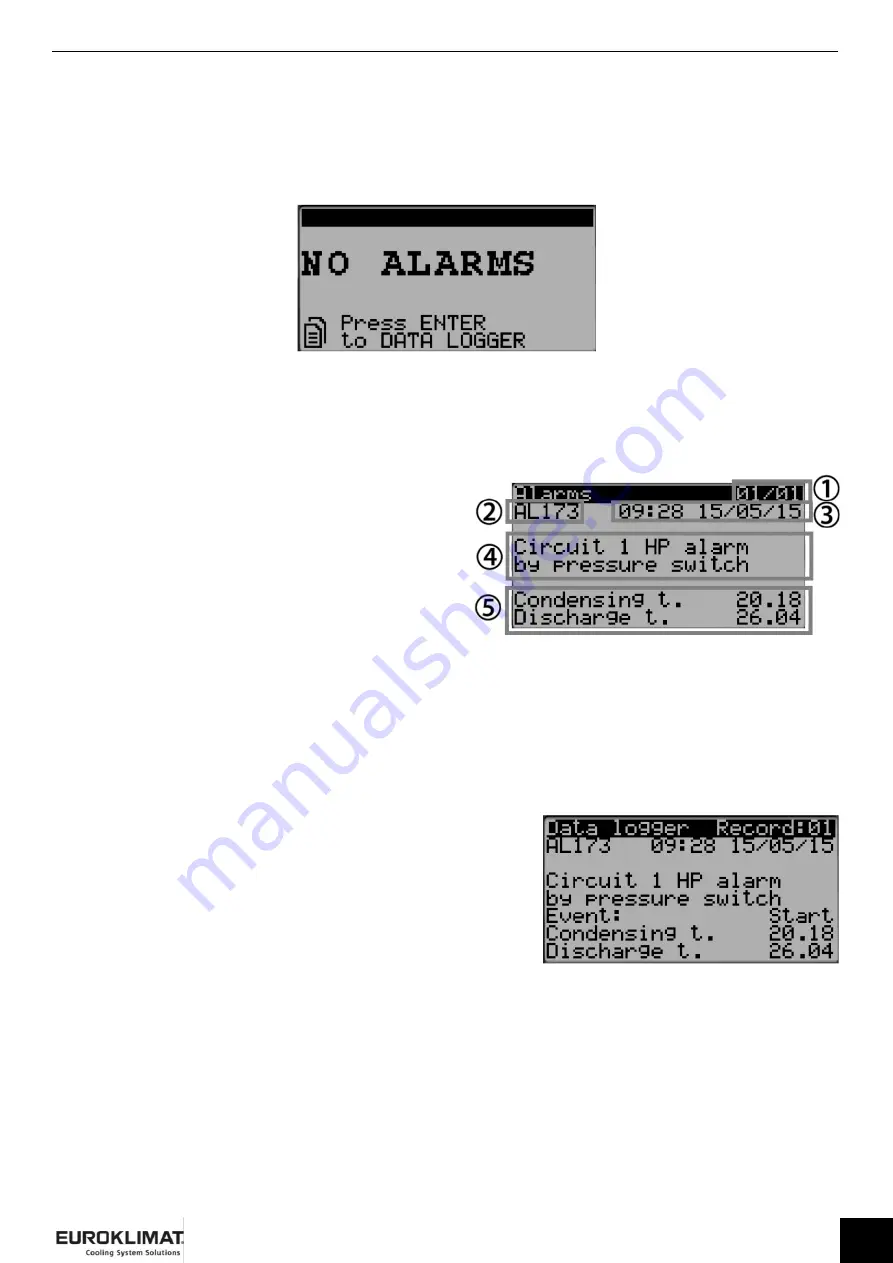
41
www.euroklimat.it
5.0 START-UP AND CONTROL PANEL
5.4 ALARMS
5.4.1 ALARMS INTERFACE
Alarms screen and LEDs
Pressing the ALARM key can occur in two different situations - no alarm or an alarm present.
If there is no alarm, the following screen is displayed:
This screen makes it possible to easily enter the alarms log using the ENTER key.
If there is at least one alarm, the alarms screen is displayed sorted by alarm code from lesser to greater.
Each alarm contains the information needed to understand the cause of the alarm.
The information available in the screen is shown below:
1. Alarm number/total alarms
2. Unique alarm code
3. Alarm date and time
4. Long alarm description
5. Value of the probes linked to the alarm
In every alarm screen, the alarms log can be displayed by pressing ENTER.
The red LED under the ALARM button can be:
-
Off: no active alarm
-
La Flashing: there is at least one active alarm and the display shows a screen that is not part of the alarms loop
-
On: there is at least one active alarms and a screen that is part of the alarms loop is displayed
Alarms log
From the main menu, entering the Alarms Log menu allows access to the following
alarms log display screen.
The alarms log memorizes the EKapt operation status when the alarms are triggered.
Each log entry is an even that can be displayed from among all of the events available
in the memory.
The information saved in the alarms screen will also be saved in the alarms log. The
maximum number of events that can be saved is 64. Once the limit is reached, the most
recent alarm will overwrite the oldest one.
The alarms log can be cleared in the Setting->Initialization menu through the specific command.
Reset alarms
The alarms can be reset manually, automatically or automatically with retries:
-
Manual reset: when the cause of the alarm has stopped, the buzzer must first be reset using the ALARM button and then the ALARM
button pressed a second time for a true reset. At this point, even the specific alarm action is reset and the device can restart.
-
Automatic reset: when the alarm condition stops automatically, the buzzer is silenced and the alarm reset.
-
Automatic reset with retries: The number of interventions per hour is checked. If that number is less than the set maximum, the alarm
is on automatic reset, once the limit is exceeded it becomes manual.






























